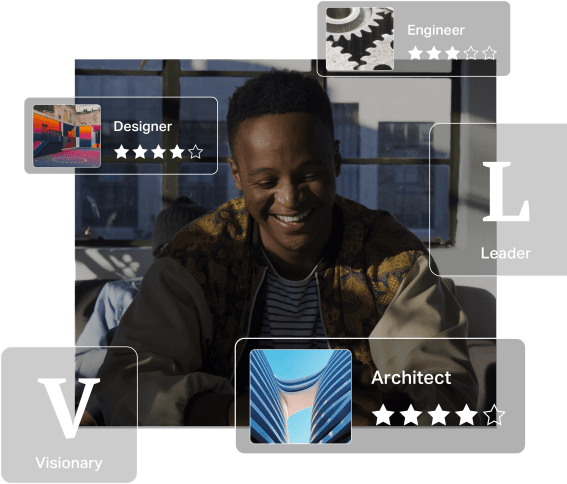When it comes to job hunting, your resume and cover letter create the first impression that potential employers will have of you. These documents are essential tools for showcasing your skills, experience, and qualifications, and can make the difference between landing your dream job or getting passed over for another candidate.
In this blog post, we’ll explore the best practices for creating effective resumes and cover letters that will help you stand out from the competition and increase your chances of getting hired. From formatting and layout to content and tone, we’ll provide tips, tricks, and examples for creating compelling documents that will capture the attention of hiring managers and help you land the job you want.
Creating a Resume
Creating an effective resume is an essential part of the job search process. Your resume is your chance to make a great first impression on potential employers. By following the following tips and tailoring your resume to the specific job you’re applying for, you can increase your chances of landing an interview.
- Choose a clean, professional format: The format of your resume is important because it can affect how it is received by potential employers. Use a simple, easy-to-read font such as Arial or Times New Roman, and keep the formatting consistent throughout the document. Use a font size between 10-12pt, and use bold or italics sparingly to draw attention to key points. Use bullet points and white space to make the document easy to scan quickly.
- Start with a strong headline: Use a strong headline or summary statement at the top of your resume to capture the reader’s attention and provide a quick snapshot of your experience and qualifications. It should be concise and to the point. It should highlight your most relevant experience and qualifications, and give potential employers a reason to continue reading your resume.
- Highlight your most relevant experience: When describing your work experience, focus on the most relevant experiences and skills that match the requirements of the job you’re applying for. Use bullet points to describe your accomplishments in each role, and provide specific examples of how you’ve contributed to previous employers.
- Quantify your accomplishments: To make your accomplishments stand out, use numbers, percentages, and other metrics to quantify your achievements. This will help potential employers understand the impact you’ve had in previous roles.
- Use keywords: Many employers use applicant tracking systems (ATS) to scan resumes for keywords that match the requirements of the job. To ensure that your resume gets noticed, use keywords and phrases from the job posting in your resume. This will also help demonstrate that you have the skills and experience required for the position.
- Proofread carefully: It’s essential to proofread your resume carefully to ensure it’s free of errors. Use tools like Grammarly or Hemingway to check for grammar and spelling mistakes. Have someone else review your resume as well to catch any errors you may have missed.
- Customize your resume: Customizing your resume for each job you apply for is important because it shows potential employers that you’ve taken the time to understand their needs and are a good fit for the position. Use the job posting as a guide to tailor your resume to the specific requirements of the role.
Example Resume
The following is an example of a great resume. It is well-organized, easy to read, and clearly highlights the candidate’s education, experience, skills, and achievements. It also includes relevant certifications and a statement about references being available upon request.
John Smith
123 Main Street | Anytown, USA 12345 | (123) 456-7890 | johnsmith@email.com
Objective: Seeking a challenging position in the field of marketing where I can utilize my skills and experience to help a company achieve its goals.
Education:
- Bachelor of Science in Marketing, University of California, Los Angeles (UCLA), 2010-2014
- GPA: 3.8/4.0
- Dean’s List, 2011-2014
Experience:
Marketing Manager, XYZ Company, Los Angeles, CA (2014-present)
- Developed and implemented marketing strategies to increase brand awareness and drive sales
- Managed a team of five marketing professionals to execute campaigns across multiple channels including email, social media, and advertising
- Analyzed campaign performance and made data-driven decisions to optimize results
- Collaborated with cross-functional teams including sales, product, and design to ensure alignment on messaging and goals
Marketing Intern, ABC Corporation, Los Angeles, CA (Summer 2013)
- Assisted in the development and execution of marketing campaigns for a new product launch
- Conducted market research to identify potential target audiences and competitive landscape
- Created content for social media and email marketing campaigns
- Coordinated event logistics for product launch party
Skills:
- Proficient in Microsoft Office, Google Analytics, Adobe Creative Suite, and Salesforce
- Excellent communication and interpersonal skills
- Strong analytical and problem-solving abilities
- Experience managing teams and working in a fast-paced environment
Certifications:
- Google Analytics Certification, 2015
- HubSpot Inbound Marketing Certification, 2016
References available upon request.
Creating a Cover Letter
A cover letter is a document that accompanies a resume and provides an introduction to the applicant, their qualifications, and their interest in the job. Here are some best practices for creating an effective cover letter:
- Address the letter to the appropriate person: Addressing the letter to a specific person, rather than using a generic salutation like “To Whom It May Concern,” shows that you have done your research and are genuinely interested in the position. If the job posting does not include the name of a specific person, do some research to find out who the hiring manager or recruiter is for the position.
- Customize the letter for each job: Customize your letter for each job you apply for. Use keywords from the job description and explain how your skills and experience match the requirements of the job. This shows that you have read the job description carefully and are genuinely interested in the position.
- Keep it brief and to the point: Your letter should be no longer than one page. Use clear and concise language and avoid using overly complicated words or industry jargon. Be sure to include all the relevant information in the letter, but don’t include anything that is not directly related to the job.
- Highlight your most relevant qualifications: Focus on the qualifications that are most relevant to the job you are applying for. Provide specific examples of how you have used these qualifications in past roles. Be sure to include any relevant education or certifications as well.
- Show enthusiasm: Express your enthusiasm for the job and the company. Explain why you are excited about the opportunity and how you can contribute to the organization. This shows that you are genuinely interested in the job and are motivated to do well.
- Proofread carefully: Check your letter for spelling and grammatical errors. Have someone else read it over as well to catch any mistakes you may have missed. A cover letter with typos or errors can create a negative impression and hurt your chances of getting the job.
- Use a professional format: Use a professional format for your cover letter, with a clear and easy-to-read font. Use proper spacing and formatting to make the letter easy to scan quickly. Be sure to include your contact information at the top of the letter, including your name, address, phone number, and email address.
- Be professional and courteous: Use a professional tone in your letter, and avoid using slang or informal language. Be courteous and respectful in your language, and thank the employer for considering your application.
Example Cover Letter
The following is an example of a great cover letter. It is personalized to the job and company, highlights the applicant’s most relevant qualifications, and shows their enthusiasm for the position. It is clear, concise, and error-free, with a professional format and tone.
Dear [Hiring Manager],
I am excited to submit my application for the [Position] role at [Company]. With [Number of years] of experience in [Industry/Field], I am confident in my ability to contribute to your team and help drive your organization’s success.
In my current role at [Current Company], I have gained valuable experience in [Skill/Experience Relevant to Job], where I have [Achievement/Project/Responsibility]. This experience has allowed me to develop [Skill/Experience] and I believe it will be particularly valuable in the [Position] role at [Company].
I am impressed by [Company’s Unique Selling Proposition/Value Proposition] and am excited about the opportunity to work with a team of professionals who share a commitment to [Company Values]. I am particularly drawn to [Specific aspect of Company, e.g. mission, culture, products/services] and am eager to contribute my skills to further the success of the company.
As an individual with strong [Skill/Characteristic Relevant to Job], I am confident that I can make a positive contribution to your team. I am a fast learner, am able to work independently or as part of a team, and have excellent communication and interpersonal skills.
Thank you for considering my application. I look forward to discussing my qualifications further.
Sincerely, [Your Name]
Follow Up
After sending your resume and cover letter, here are the steps you can take to follow up and increase your chances of getting an interview:
- Wait for a response: After submitting your application, it’s important to give the employer some time to review your materials and make a decision. The timeframe for a response can vary depending on the company and the job, but it’s usually best to wait at least a week before following up.
- Send a follow-up email: If you haven’t heard back after a week, it’s appropriate to send a follow-up email. In your email, express your continued interest in the position and ask if there is any additional information you can provide or if there is an estimated timeline for making a decision.
- Make a phone call: If you still haven’t heard back after a week or two, you can try calling the company to follow up on your application. Be polite and professional on the phone, and ask if there is any update on your application status.
- Keep networking: While waiting for a response, continue networking and exploring other job opportunities. Attend career fairs, industry events, and other networking opportunities to meet people in your field and learn about new job openings.
- Prepare for an interview: If you are invited for an interview, be sure to prepare thoroughly by researching the company, practicing common interview questions, and preparing your responses to specific job-related questions. Dress professionally and bring copies of your resume and cover letter with you to the interview.
- Keep a positive attitude: Job searching can be a long and challenging process, but it’s important to stay positive and motivated. Don’t get discouraged if you don’t hear back from every job you apply to, and keep working on improving your skills and qualifications for future opportunities.
Example Follow-Up Email
Here’s an example of a follow-up email you could send after sending your resume and cover letter:
Dear [Hiring Manager’s Name],
I hope this email finds you well. I wanted to follow up on my recent job application for the [Position] role at [Company Name].
I am incredibly excited about the opportunity to join your team and contribute to the success of the company. My skills and experience align well with the requirements of the role, and I am confident that I would make a valuable addition to the team.
I understand that you likely have many applications to review, but I wanted to express my continued interest in the position and my eagerness to discuss my qualifications further. If there are any additional materials or information that I can provide to support my application, please do not hesitate to let me know.
Thank you for considering my application. I look forward to hearing from you soon.
Best regards,
[Your Name]
Conclusion
In conclusion, resumes and cover letters are crucial in today’s competitive job market. They provide a first impression of your qualifications and skills, and can set you apart from other candidates.
However, it’s not enough to just send your application and wait for a response. Following up after sending your resume and cover letter can demonstrate your continued interest in the position and can help you stand out from other candidates. By sending a follow-up email or making a phone call, you can inquire about the status of your application, express your continued interest in the position, and provide any additional information that may be helpful to the employer.
Overall, a strong resume and cover letter, combined with a professional and courteous follow-up, can greatly increase your chances of getting an interview and ultimately landing the job. With a bit of effort and attention to detail, you can showcase your qualifications and demonstrate why you are the ideal candidate for the job.
Explore over 900 Careers and 400 Degrees.
Take our Career Test.
Join our CareerExplorer Discord Community.


